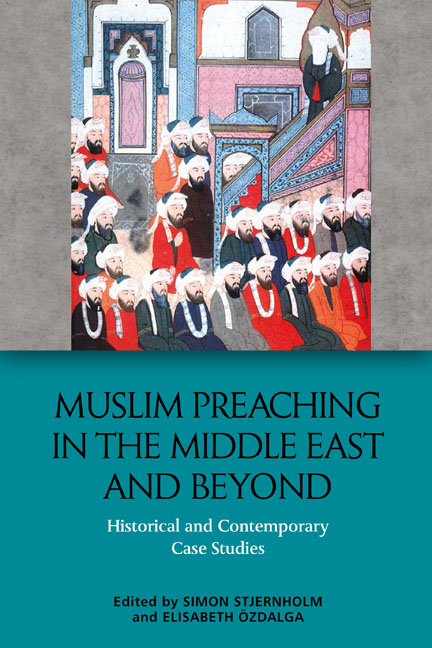9 - Discourses on Marriage, Religious Identity and Gender in Medieval and Contemporary Islamic Preaching: Continuities and Adaptations
Published online by Cambridge University Press: 20 October 2020
Summary
Islamic homiletics on marriage and spousal relations provide insights into the construction of religious and gender identities, the human–divine relationship and gender roles within a given society. Typically, Muslim canonical nuptial orations (khuṭab al-nikāḥ or khuṭab al-zawāj) cite Qurʾanic verses and the Prophet Muhammad's hadiths expressing a clear preference for marriage as the ideal relationship between men and women (al-Bukhārī: Book 67; Muslim: Book 16; Ibn Mājah: Book 9), and emphasise the spiritual, emotional and social benefits it holds for the individual and society (Q. 30:21 and Q. 4:1, 4:21). Preachers may also discuss these topics in the Friday khuṭba and in the non-canonical hortatory sermon (waʿ ẓ/mawʿi ẓa). Because homiletics has been associated with marriage since the origins of Islam, analysing sermons on marriage from different historical periods allows us to identify continuities within the homiletic tradition and detect developments reflecting the preacher's adaptation of his message to suit the needs, expectations and values of his audience. Contemporary Muslim preachers face the added challenges of needing to negotiate the globalising moral contexts of contemporary Muslim communities.
Since I have discussed specimens of Islamic nuptial orations elsewhere (Jones 2012: 123–30; Jones 2013), this chapter analyses Islamic homiletic discourses about marriage and marital relations in a pre-modern mawʿiẓa and a contemporary Friday khuṭba. This cross-cultural diachronic analysis of two distinct homiletic sub-genres has two broad goals. First, it seeks to explore how each preacher interprets the meaning of marriage, represents spousal relations and defines gender identities and roles for his audience. In terms of methodology, I examine the homiletic and rhetorical strategies employed in each text with the following questions in mind: how does each preacher conceptualise marriage and spousal relations? How does he envisage marriage in light of the ʿibādāt (religious obligations)? How does marriage shape Muslim gendered identities? What rhetorical devices does the preacher employ to convey his vision of marriage, spousal relations and the roles of wives and husbands? The responses to these questions will engage with academic discussions about gender and spousal relations in Islam, the relationality of gender identities, and gender justice and equality (Ali 2010; Baranzagi 2013).
- Type
- Chapter
- Information
- Muslim Preaching in the Middle East and BeyondHistorical and Contemporary Case Studies, pp. 173 - 200Publisher: Edinburgh University PressPrint publication year: 2020

